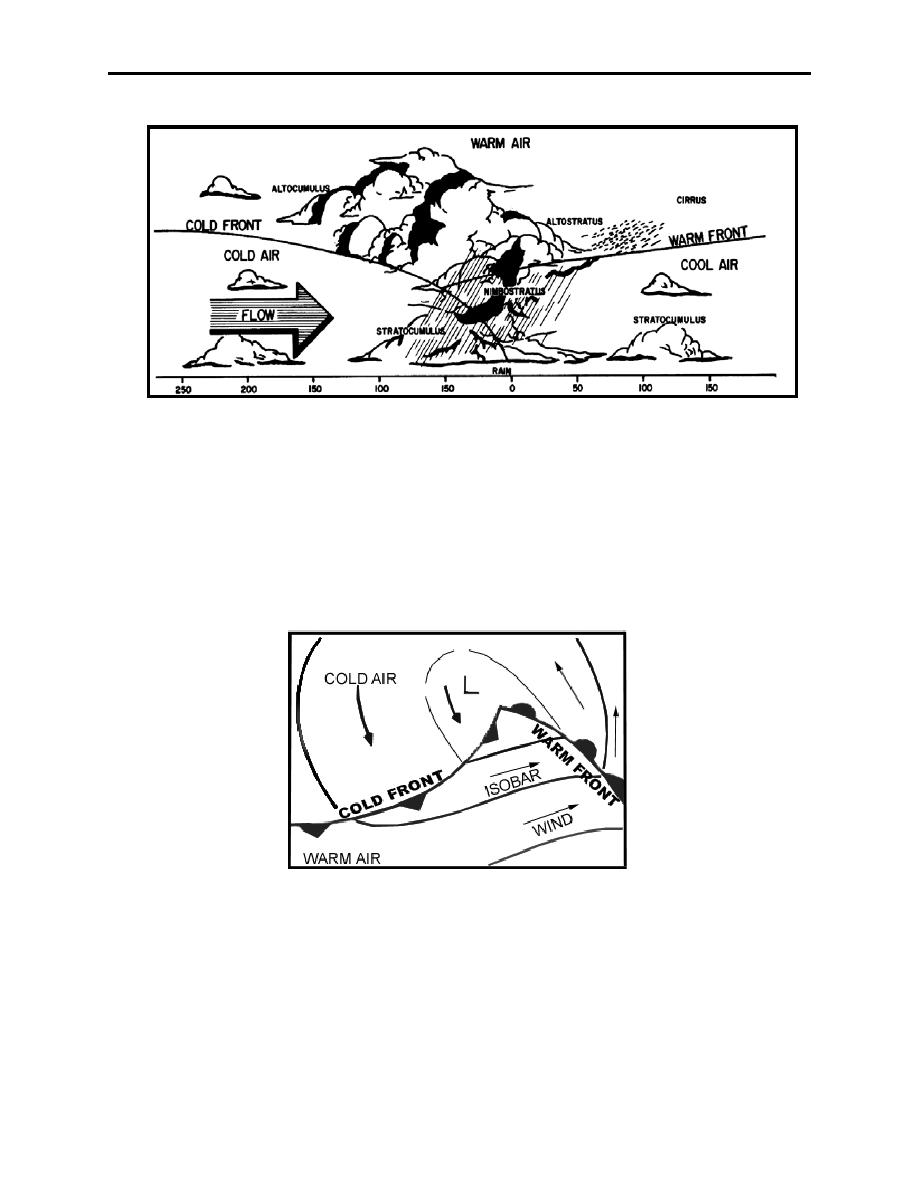 |
|||
|
|
|||
|
|
|||
| ||||||||||
|
|  CHAPTER THREE
AVIATION WEATHER
Figure 3-17 Occluded Front
Figure 3-17 depicts a profile of an occluded front. If either type of occlusion is arrived at from
the east, you would first encounter warm front type weather which may extend for several
hundred miles to the east of the surface front. On the other hand, if it were arrived at from the
west you would first encounter cold front type weather. The location of the occluded front is
significant to aircrews because the most severe weather, including ceilings and visibilities, is
generally located in an area 100 NM South to 300 NM North of the frontal intersection.
Figure 3-18 illustrates an overhead view of an occlusion.
Figure 3-18 Occluded Wave
311.
INACTIVE FRONTS
Clouds and precipitation do not accompany inactive fronts. Sometimes the warm air mass is too
dry for clouds to form even after the air is lifted and cooled. Inactive fronts may also be referred
to as dry fronts.
3-18 Mechanics of Frontal Systems
|
|
Privacy Statement - Press Release - Copyright Information. - Contact Us |